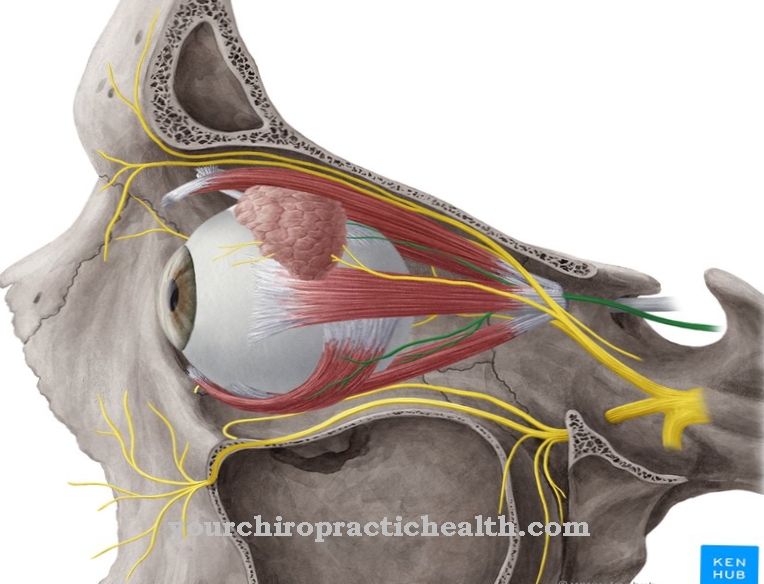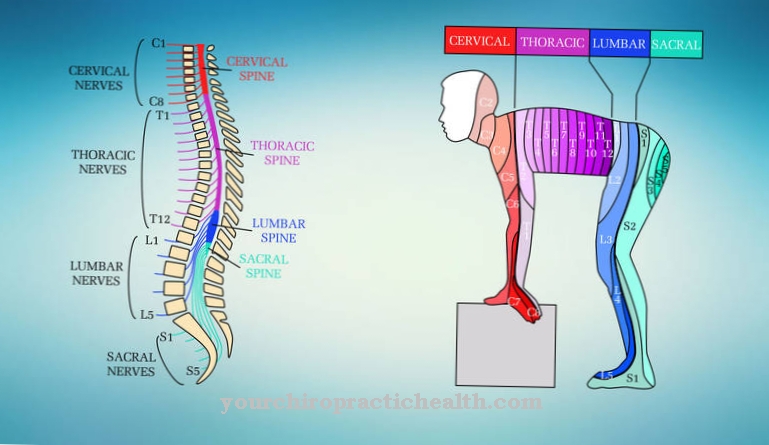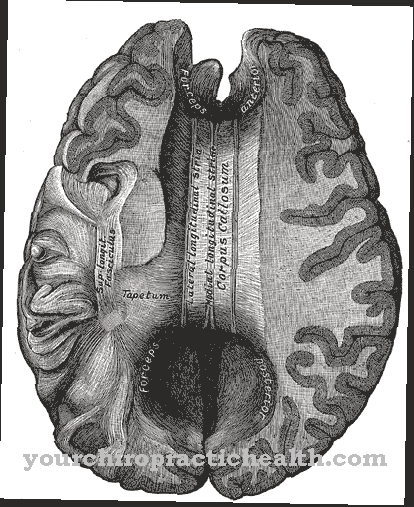The Ammon's horn is part of the brain. It is located in the hippocampus and is located in the rolled-up bark structure there. It has an important role in the learning process.
What is the Ammon's Horn?
The Ammon's horn is medically called Cornu ammonis designated. In some sources it is also called Hippocampus proprius. The Ammon's horn forms part of the internal structure of the hippocampus. Most of this is located in the inner margin of the temporal lobe.
This area is also known as the temporal lobe. The hippocampus is responsible for learning, emotions and memory formation. It is seen as part of the limbic system. The Ammonshorn contributes significantly to the learning process. It forms the basis for the formation of long-term memories.
The archicortex is located in the hippocampus. This is three-layered and is considered a hippocampal formation. The three layers are divided into the dentate gyrus, the Ammon's horn and the subiculum. The dentate gyrus is the main afferent system in the hippocampus. The subiculum forms a large part of the efferent system of the hippocampus. Therefore, most of the information in the hippocampus flows through the dentate gyrus and the subiculum. The Ammonshorn can differentiate into four regions due to the different tissue structure. These are called CA1, CA2, CA3 and CA4.
Anatomy & structure
The hippocampus is located on the inside of the temporal lobes. It looks like the body of a seahorse without the head. As soon as a frontal incision is made in the lower part of the tail, the three layers, the dentate gyrus, the Ammon's horn and the subiculum become visible.
In this area the fabric has a very characteristic structure. It is called a rolled-up bark structure. This microscopic archicortex structure is divided into three layers. The area of the Ammon's horn is subdivided into different fields of cyto-architectural structure. These are four sectors named CA1-CA4. The CA1 field contains a large number of small pyramidal cells. There are particularly large pyramidal cells in field CA2.
These are tightly packed. The same large cells are also in field CA3. Here, however, they are loosely arranged. In field CA4 the distances between the cells are even greater. The cell-rich layer is called the stratum pyramidale. The dendrites of the pyramidal cells radiate into the stratum radiatum. From there they go on into the stratum lacunosum and the stratum molecular.
Function & tasks
The Ammon's horn has an important role in consolidating memory. This is about learning or learning processes. This means the process that transfers information from short-term memory to long-term memory. This takes a time window from a few days to months. Only then are the memories permanently stored in the memory.
The so-called long-term potentiation takes place in the Ammon's horn. This serves as the basis for all learning and memory processes. This mainly applies to long-term memories and the formation of knowledge in declarative memory. Information such as facts and events are stored here. This includes factual relationships as well as spatial conditions. In addition, the Ammon's horn is also involved in the formation of implicit memory. These memory contents include courses of action, habits, motor learning and emotional learning.
The pyramidal cells in the Ammon's horn are responsible for long-term potentiation. This only works if the potentiating impulses arrive at a sufficiently high speed. Otherwise the information will expire after a short time. The Ammon's horn is responsible for the prerequisite as well as the formation of the memory content. As described above, the Ammon's horn is divided into four fields. The areas CA1-CA3 play an important role in operant conditioning. This involves learning certain stimulus-response patterns.
You can find your medication here
➔ Medicines against memory disorders and forgetfulnessDiseases
Ammon's horn pyramidal cells are particularly susceptible to damage from alcohol abuse. Regular consumption of alcohol leads to an addiction disease after several years. In severe cases, this can lead to Wernicke encephalopathy or Korsakoff syndrome.
Confabulation occurs in the patient as a result of alcohol abuse. Sick people can no longer fall back on their own memories. Because of this, they come up with answers to questions or entire stories. They consider your statements to be true and logical. Nevertheless, it is a production of objectively false statements or narratives. Patients with the diseases described are unable to admit the lack of memories. Confabulation takes place as a result of the disease.
The memory disorder is basically called amnesia. A distinction must be made between anterograde and retrograde amnesia. The antero-straight amnesia has the consequence that no new memory formation is possible. In retrograde amnesia, the memory content that arose before the brain was damaged is no longer available. They have been partially or completely deleted.
The Ammon's horn plays an essential role in the formation of memory content. Impairments of its functionality lead in particular to problems with long-term memory formation.
A lesion of the hippocampus as a result of circulatory disorders or encephalitis leads to complete temporal and spatial disorientation in addition to the loss of memory. Defects of the hippocampus are not only relevant to certain types of memory disorders, but also to diseases such as epilepsy. Ammon's horn sclerosis is the most common neuropathological finding in temporal lobe epilepsy. This is a special form of epilepsy.
























.jpg)



